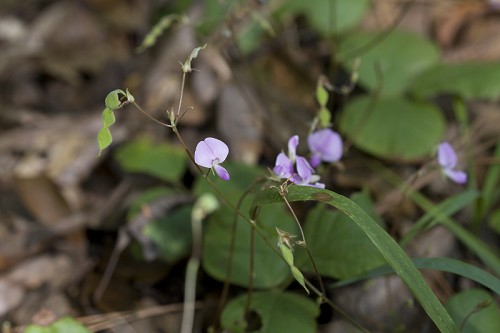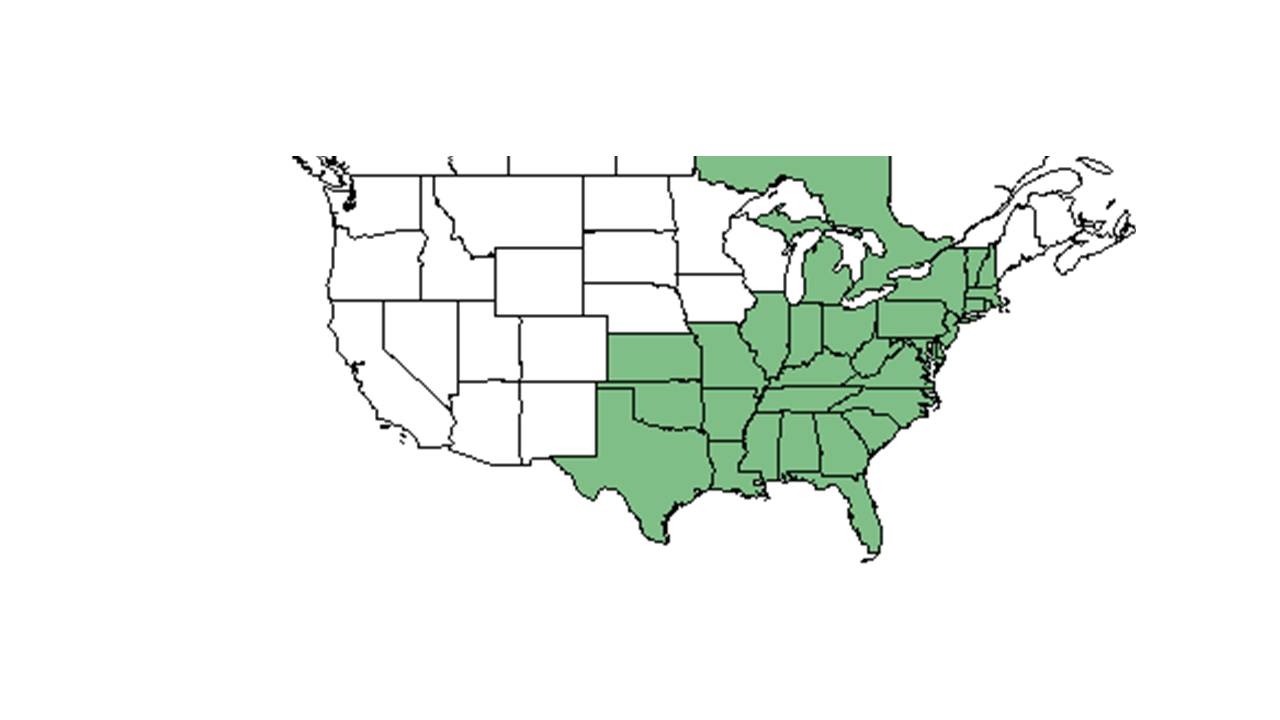Desmodium rotundifolium
| Desmodium rotundifolium | |
|---|---|

| |
| Photo by John R. Gwaltney, Southeastern Flora.com | |
| Scientific classification | |
| Kingdom: | Plantae |
| Division: | Magnoliophyta - Flowering plants |
| Class: | Magnoliopsida – Dicotyledons |
| Order: | Fabales |
| Family: | Fabaceae ⁄ Leguminosae |
| Genus: | Desmodium |
| Species: | D. rotundifolium |
| Binomial name | |
| Desmodium rotundifolium DC. | |

| |
| Natural range of Desmodium rotundifolium from USDA NRCS Plants Database. | |
Common name: Prostrate ticktrefoil
Contents
Taxonomic notes
Synonym: Meibomia michauxii Vail
Description
Flowers may be blue or light purple in northern states (FSU Herbarium). In southern areas, fresh corollas are rosy pink, then fading into a whitish color with age (FSU Herbarium). Creeping and trailing habit and prostrate(FSU Herbarium).
Generally, for Desmodium genus, they are "annual or perennial herbs, shrubs or small trees. Leaves 1-5 foliolate, pinnately 3-foliolate in ours or rarely the uppermost or lowermost 1-foliolate; leaflets entire, usually stipellate; stipules caduceus to persistent, ovate to subulate, foliaceous to setaceous, often striate. Inflorescence terminal and from the upper axils, paniculate or occasionally racemose; pedicel of each papilionaceous flower subtended by a secondary bract or bractlet, the cluster of 1-few flowers subtended by a primary bract. Calyx slightly to conspicuously 2-lipped, the upper lip scarcely bifid, the lower lip 3-dentate; petals pink, roseate, purple, bluish or white; stamens monadelphous or more commonly diadelphous and then 9 and 1. Legume a stipitate loment, the segments 2-many or rarely solitary, usually flattened and densely uncinated-pubescent, separating into 1-seeded, indehiscent segments." - Radford et al 1964.
Specifically, for D. rotundifolium species, they are "perennial with trailing, densely villous or very rarely glabrate stems 0.5-1.5 m long. Terminal leaflets suborbicular to widely rhombic or obovate, 3-7 cm long, densely appressed to spreading pilose on both surfaces; stipules persistent, ovate, obliquely and widely clasping at base, 8-12 mm long; stipels usually persistent. Inflorescences typically axillary, occasionally terminal, racemose to paniculate; pedicels 6-13 mm long. Calyx sparsely pilose to puberulent; petals purple, 8-10 mm long; stamens diadelphous. Loment of (3) 4-6 segments, each 5-7 mm long, 4-5 broad, both sutures and sides densely uncinlate, both margins about equally indented; stipe 2.5-5 mm long, mostly included within calyx tube and exceeded by stamina remnants." - Radford et al 1964.
Distribution
Ecology
Habitat
It is found in mixed hardwoods including pines, oaks, and hickories (FSU Herbarium). It is also found in lightly wooded hillsides, dry glacial drift, and open woods (FSU Herbarium). It requires shaded areas (FSU Herbarium). It is associated with drying sandy loam soil types (FSU Herbarium).
Associated species include Desmodium lineatum, Desmodium ochroleucum, Rhynchosia difformis, Smilax pumila, Rhus aromatica (FSU Herbarium).
Phenology
It has been observed flowering from August through October and has been seen fruiting in September (FSU Herbarium).
Fire ecology
It becomes more robust in response to fire (FSU Herbarium).